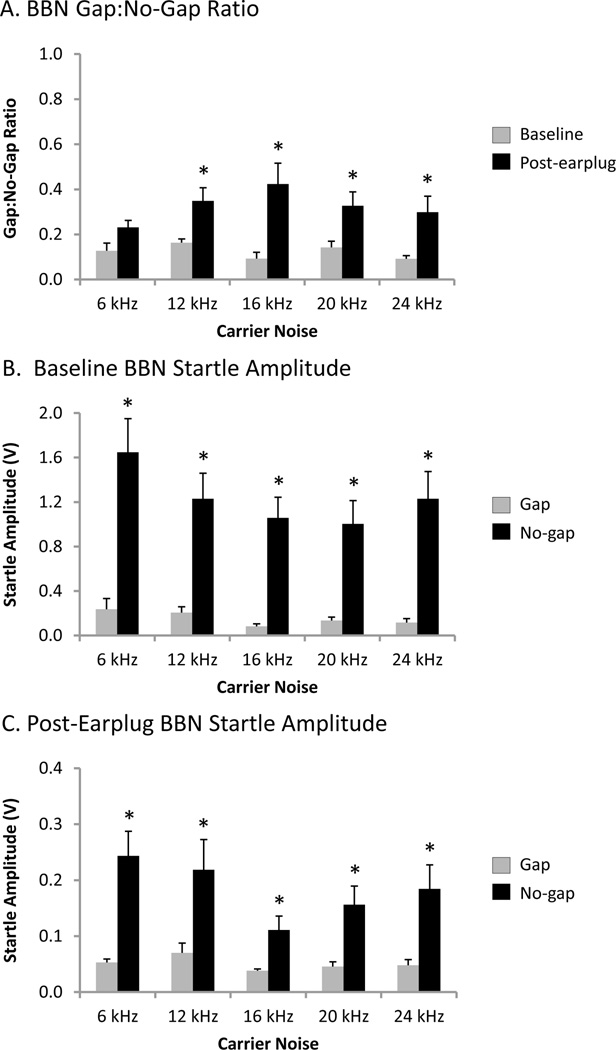Figure 5.
Broadband noise (BBN) gap prepulse inhibition of the acoustic startle response (A) and raw startle amplitudes during gap and no-gap trials before (B) and during (C) unilateral conductive hearing loss. (A) During unilateral conductive hearing loss (black), the gap:no-gap ratio was significantly elevated compared to baseline (grey) at 12–24 kHz (two-way repeated measures ANOVA and Student-Newman-Keuls tests, * P<0.005). (B) At baseline, the group mean broadband noise startle amplitude during the gap trials (grey) was not significantly different from the noise floor (0.052±0.004 V) at any carrier noise frequency, whereas the startle amplitudes during no-gap trials (black) were above the noise floor at all frequencies. Additionally, the group mean broadband noise startle amplitude during gap trials was significantly lower than during no-gap trials at all carrier noise frequencies (two-way repeated measures ANOVA and Student-Newman-Keuls post hoc tests, * P<0.001). (C) During unilateral conductive hearing loss, the no-gap startle amplitudes were dramatically reduced from baseline (note the 5-fold reduction in ordinate scaling compared to panel B). The group mean startle amplitudes during the gap trials (grey) was not significantly different from the noise floor (0.037±0.002 V) at any carrier noise frequency, whereas the startle amplitudes during no-gap trials (black) were above the noise floor at all frequencies. Additionally, the group mean broadband noise startle amplitude during gap trials was significantly lower than during no-gap trials at all carrier noise frequencies (two-way repeated measures ANOVA and Student-Newman-Keuls post hoc tests, * P<0.05). Values represent mean ± SEM for n = 6.

